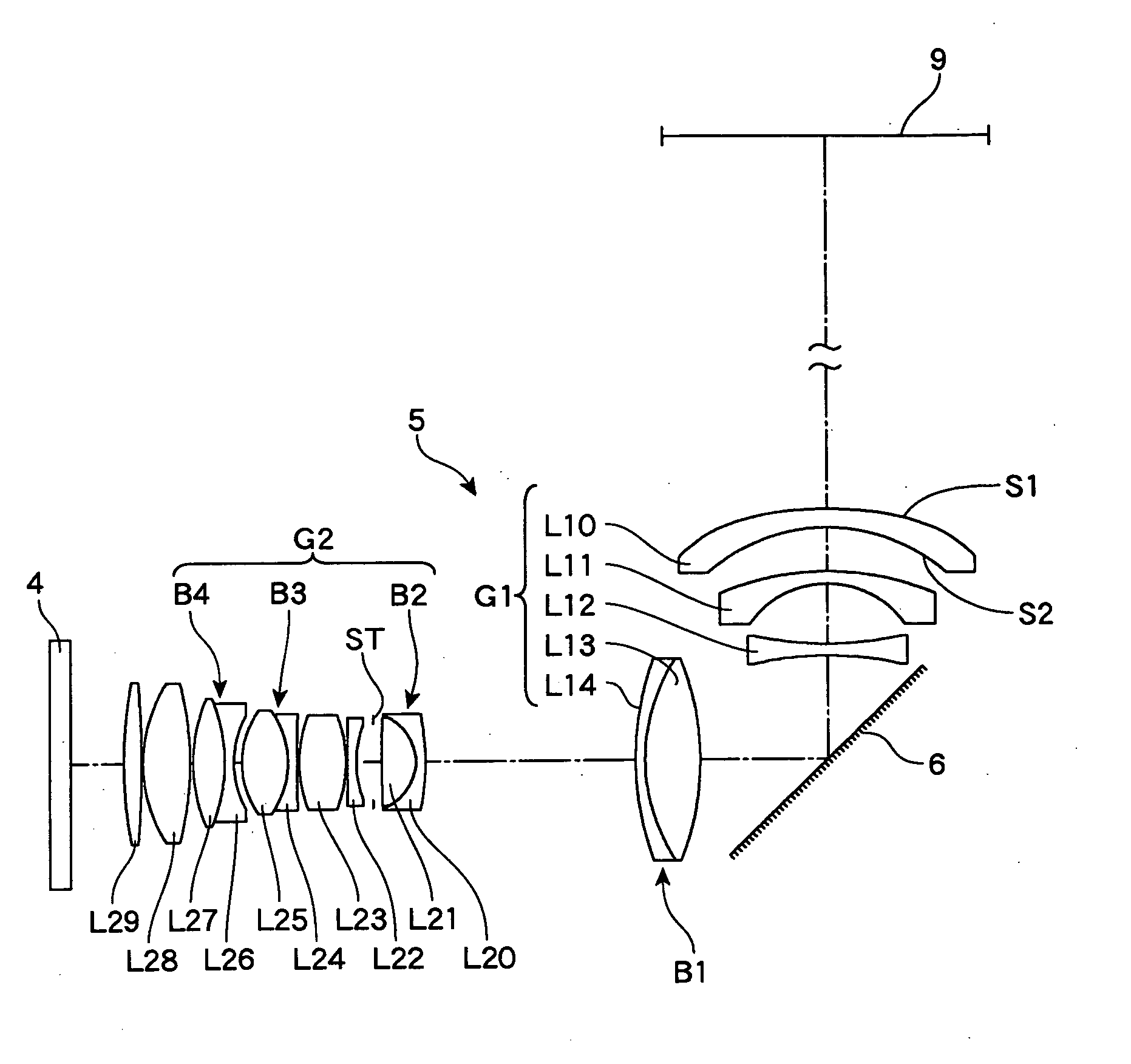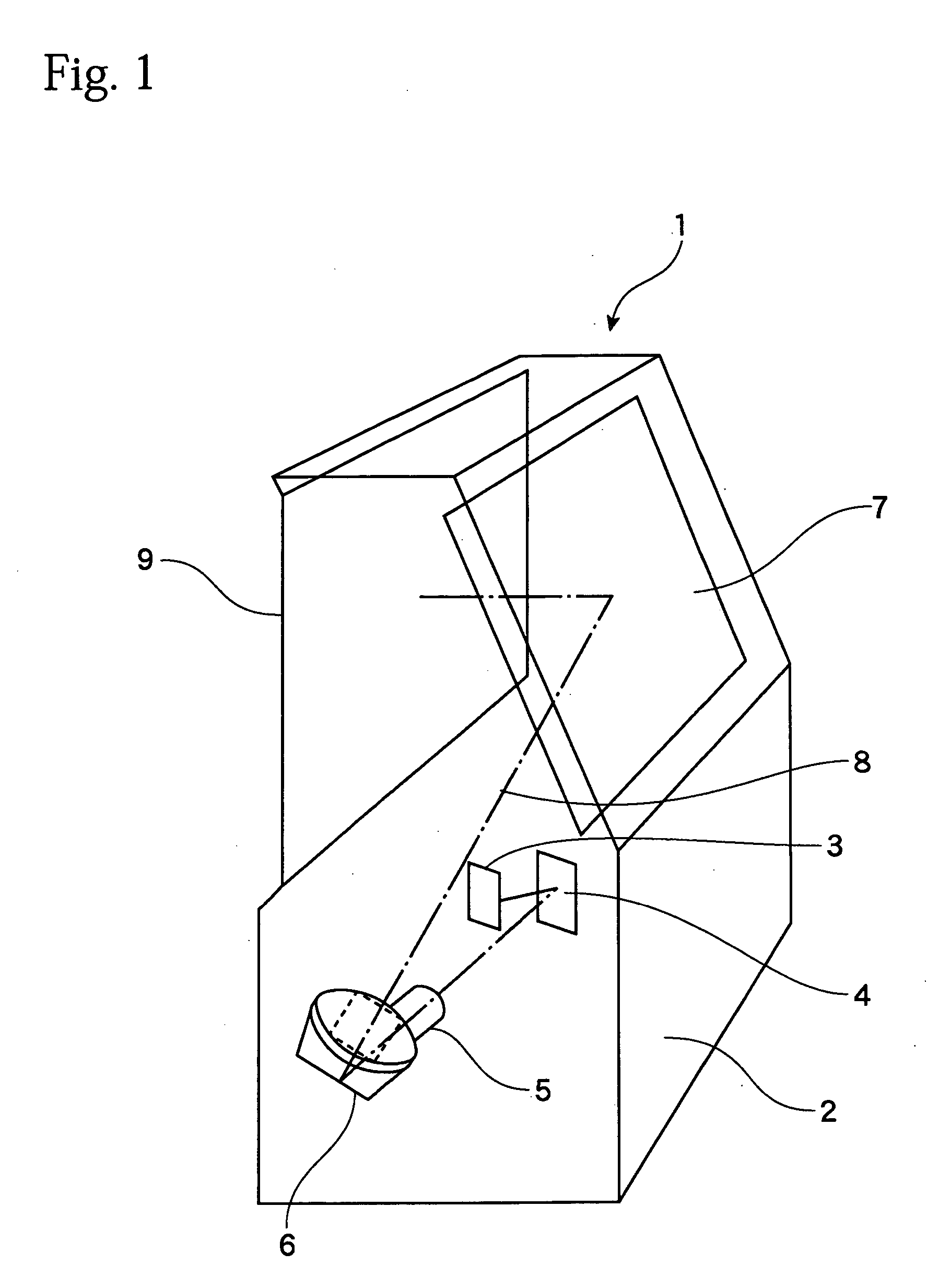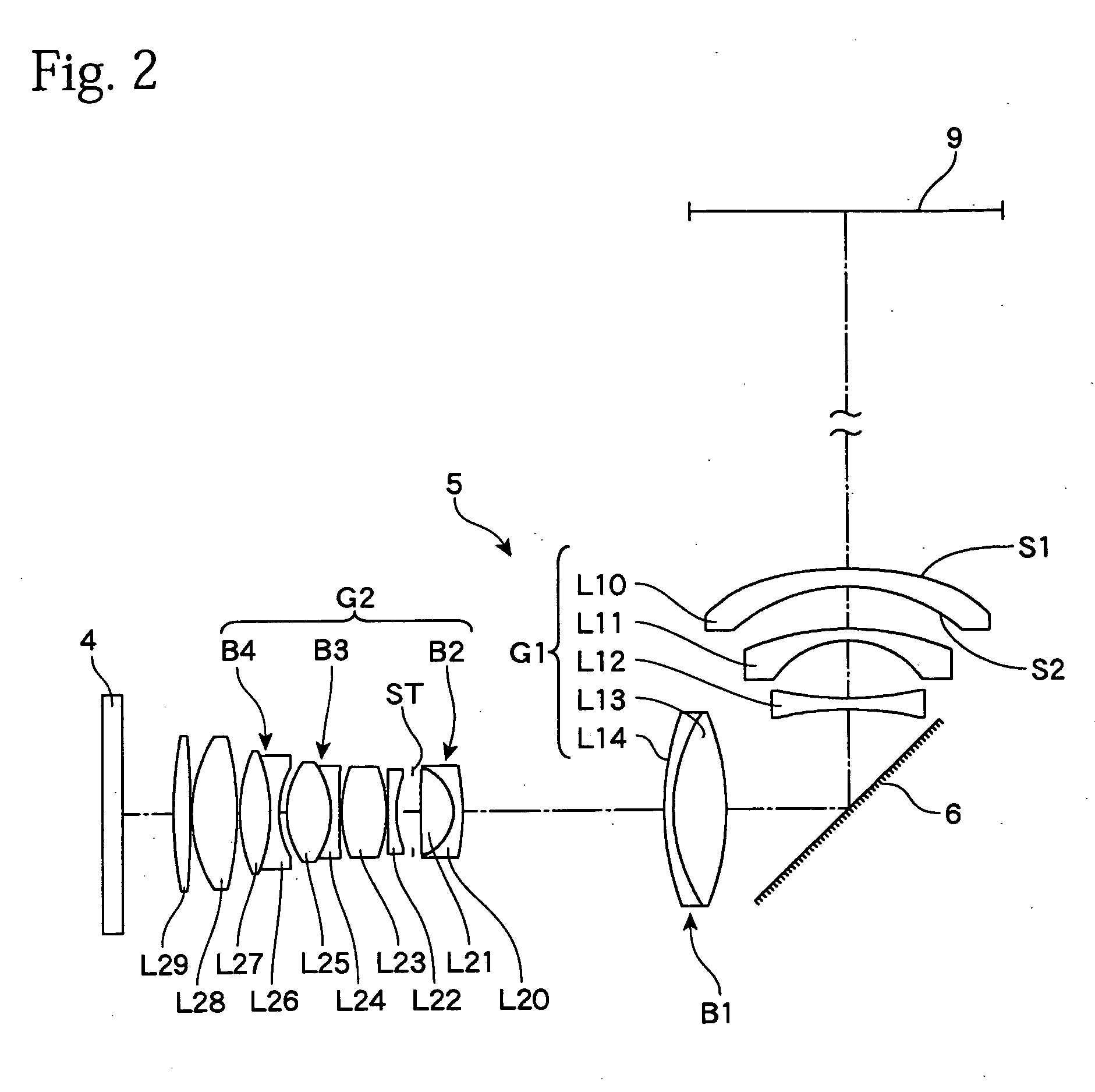Projection lens system and projector
a projector and lens system technology, applied in the field of projector projection lens system, can solve the problems of difficult to reduce distortion, slim rear projector, and increased length of the first lens group positioned on the screen side, so as to achieve slim overall construction, improve the effect of reducing distortion and reducing distortion
- Summary
- Abstract
- Description
- Claims
- Application Information
AI Technical Summary
Benefits of technology
Problems solved by technology
Method used
Image
Examples
Embodiment Construction
)
[0019]FIG. 1 shows the construction of a rear projector 1 equipped with a projection lens system according to the present invention. The rear projector 1 includes, inside a housing 2, a light source 3, a light modulator (light valve) 4 that modulates light from the light source 3 according to an image signal to form an image, a projection lens system 5 that projects projection light 8 from the light valve 4 onto a screen 9 from the rear surface side, and a mirror 7 that reflects and guides the projection light 8 to the screen 9. A liquid crystal panel is often used as the light valve 4, but it is also possible to use a DMD panel composed of micro-mirror elements. When a DMD panel or an LCOS (reflective liquid crystal) panel is used, the light valve 4 is reflective, and accordingly the light source 3 is disposed on the same side of the light valve 4 as the projection lens system 5. It is therefore necessary to use a lens system with a long back focus as the projection lens system 5....
PUM
 Login to View More
Login to View More Abstract
Description
Claims
Application Information
 Login to View More
Login to View More - R&D
- Intellectual Property
- Life Sciences
- Materials
- Tech Scout
- Unparalleled Data Quality
- Higher Quality Content
- 60% Fewer Hallucinations
Browse by: Latest US Patents, China's latest patents, Technical Efficacy Thesaurus, Application Domain, Technology Topic, Popular Technical Reports.
© 2025 PatSnap. All rights reserved.Legal|Privacy policy|Modern Slavery Act Transparency Statement|Sitemap|About US| Contact US: help@patsnap.com



